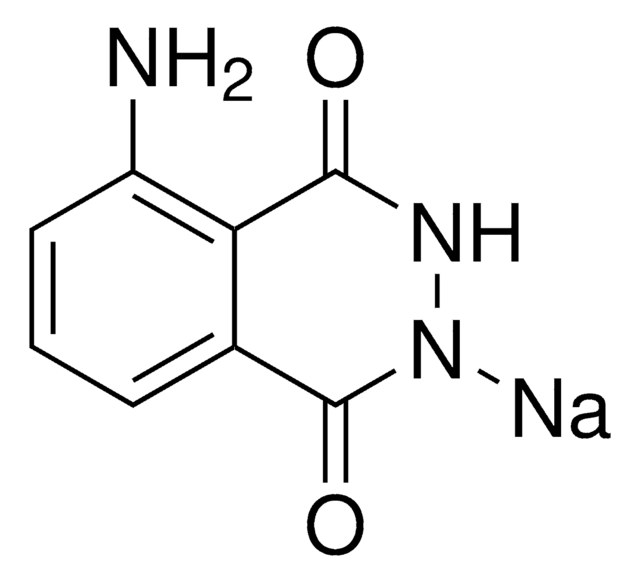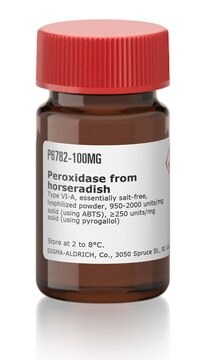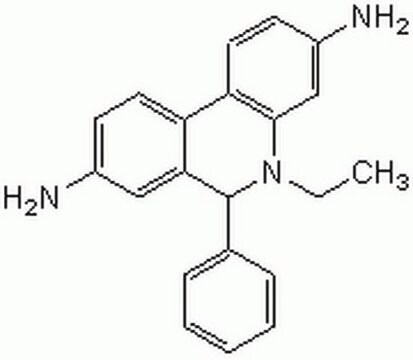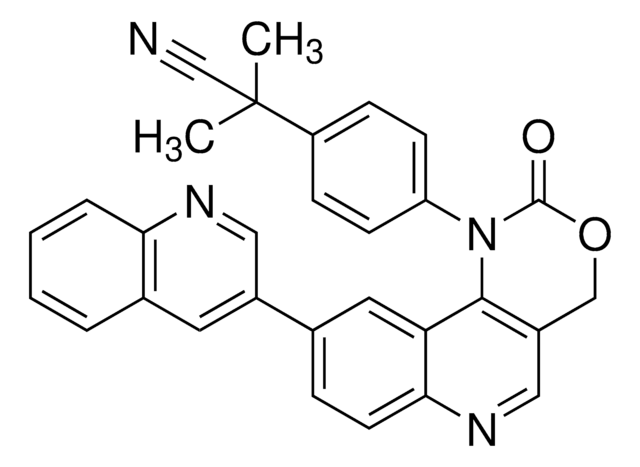Kluczowe dokumenty
SML2236
L-012 sodium salt
≥98% (HPLC), powder, neurotoxin
Synonim(y):
8-Amino-5-chloro-2,3-dihydro-7-phenyl-Pyrido[3,4-d]pyridazine-1,4-dione, sodium salt, 8-Amino-5-chloro-7-phenyl-2,3-dihydro-pyrido[3,4-d]pyridazine-1,4-dione, sodium salt, L012
About This Item
Polecane produkty
product name
L-012 sodium salt, ≥98% (HPLC)
Próba
≥98% (HPLC)
Postać
powder
kolor
yellow to orange
rozpuszczalność
H2O: 2 mg/mL, clear
temp. przechowywania
−20°C
InChI
1S/C13H9ClN4O2.Na/c14-11-8-7(12(19)17-18-13(8)20)9(15)10(16-11)6-4-2-1-3-5-6;/h1-5H,15H2,(H,17,19)(H,18,20);/q;+1/p-1
Klucz InChI
IGEUYSJHQQCEFP-UHFFFAOYSA-M
Zastosowanie
Działania biochem./fizjol.
Kod klasy składowania
11 - Combustible Solids
Klasa zagrożenia wodnego (WGK)
WGK 3
Temperatura zapłonu (°F)
Not applicable
Temperatura zapłonu (°C)
Not applicable
Certyfikaty analizy (CoA)
Poszukaj Certyfikaty analizy (CoA), wpisując numer partii/serii produktów. Numery serii i partii można znaleźć na etykiecie produktu po słowach „seria” lub „partia”.
Masz już ten produkt?
Dokumenty związane z niedawno zakupionymi produktami zostały zamieszczone w Bibliotece dokumentów.
Klienci oglądali również te produkty
Nasz zespół naukowców ma doświadczenie we wszystkich obszarach badań, w tym w naukach przyrodniczych, materiałoznawstwie, syntezie chemicznej, chromatografii, analityce i wielu innych dziedzinach.
Skontaktuj się z zespołem ds. pomocy technicznej









